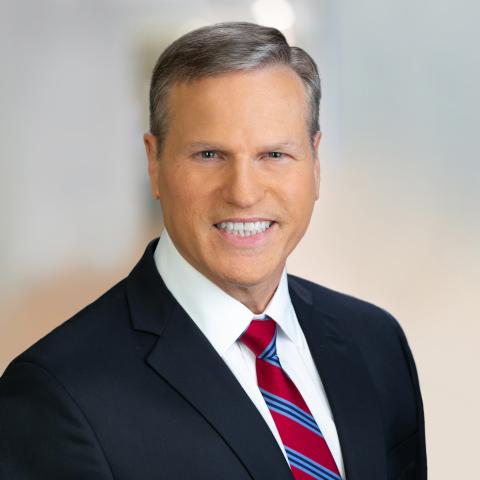Elon Musk finally pulled the trigger on Twitter, paying $44 billion for the company. As we previously wrote, we thought he would.
The past several months of negotiations over the purchase have been marred by endless bickering over price. Did Musk want to own Twitter? Yes. Was he paying too much? Perhaps.
In recent days, the newest batch of hand-wringing naysayers have emerged, suggesting that Twitter was previously an efficient and profitable business built on censorship that Musk would now ruin by allowing freer speech on the platform. Advertisers would supposedly leave in droves. The company would ultimately collapse and be forced to close its doors.
To much of the world, Twitter appears to have been spectacularly successful and profitable for years. Celebrities, professional athletes, social media influencers, and politicians of all stripes use Twitter. A person’s Twitter follower count has become one of the few universal benchmarks of popularity and status online. From Hollywood to the halls of Parliament, from Pyongyang to Xinjiang, and from Teheran to the Taliban, the common language of influence is premised on Twitter. Surely, with the power to determine who is popular and who is not, and who can influence and who cannot, Twitter must have been immensely profitable.
But it was all a financial illusion. As it turns out, Twitter was wildly successful at making the Twitter brand and platform globally successful, but it was seemingly incapable of—perhaps even uninterested in—turning that name and platform into consistent profits. Even by the hocus-pocus standards of measuring the profitability of Silicon Valley companies, Twitter was a consistent underperformer.
A rational new owner would look at Twitter and see that it was a financial laggard. Replace the management team? That is precisely what Musk is doing. Cut the dead weight to reduce unnecessary costs? Done. Frighten away advertisers? While pro-censorship activists and disdain for Musk’s eclectic personality may have had some effect, advertisers have not suddenly disappeared en masse.
Up from $3 billion in 2018, Twitter’s annual revenue is now more than $5 billion. That is a large number—but it’s not nearly large enough for a company with the ubiquity and scope of Twitter. Hundreds, if not thousands, of relatively unknown businesses have greater revenue. Brand familiarity is not synonymous with revenue, but Twitter should be able to have much more revenue. Musk appears to share that opinion.
To that end, here are a few unsolicited suggestions for how Musk might turn around Twitter 2.0:
Develop multiple revenue streams with different categories of users. With nearly 400 million users globally, Twitter should not be a one-trick pony with one service that is solely advertiser-supported. With such a large population of users, Twitter should be able to develop a portfolio of services with a corresponding portfolio of revenue sources. Firms such as Netflix, for example, have recently discovered that relying on a single revenue source is rarely successful. To that end, Musk and the new leadership team should continue to explore paid revenue models, such as an $8 monthly charge for account verification and other enhanced account features.
Take Twitter largely out of the content moderation business. Twitter, like all good stewards, must prevent the dissemination of pirated materials, targeted harassment and threats, and other illegal content on its platform. But much of Twitter’s content moderation efforts under its prior leadership were focused not on this, but instead concerns over “fake news” and “misinformation”—an inherently subjective and fraught exercise.
Twitter has made significant strides to remove itself as the ultimate arbiter of truth on its platform. It has smartly kept in place a feature implemented by the prior leadership team, known as “Birdwatch,” that places user-created contextual notes next to prominent tweets, rather than declarations of truth from Twitter itself—or, worse, the outright deletion of tweets or accounts. This feature has been applied to political voices of all stripes—including, mostly prominently, President Biden. Twitter should continue this approach.
An additional measure that would help is to let users choose their own third-party content filtering algorithm, rather than having Twitter—or any single party—choose the default algorithm. Twitter has no greater expertise at filtering content than other companies. The world has countless filtering algorithms, most relatively unused. By allowing users to choose their own content algorithms, Twitter would attract more users who may currently feel that the voices they wish to listen to are stifled on the current platform.
Third-party algorithms should attract more advertising. Advertisers want viewers—particularly targeted viewers. A wide array of third-party filters would attract not only more users, but also more advertisers. This is because users who filter based on certain content preferences are more attractive to advertisers, as this allows them to reach customers more efficiently with more narrowly-tailored advertisements,
Be transparent about filtering. Twitter and other social media platforms have generated public skepticism not so much because they filter out content, but because their filtering methods are opaque. A Twitter that largely filters out nothing but unlawful content can and should be completely transparent about that. Third-party software providers that filter out additional content should be encouraged to be transparent about how they filter content. It is better for Twitter to have its users troubled by the subjective and opaque content decisions of third-party vendors that they choose, rather than have such decisions be made by Twitter.




















